
Christopher Edward Nolan is a British-American filmmaker. Known for his Hollywood blockbusters with complex storytelling, Nolan is considered a leading filmmaker of the 21st century. His films have grossed $5 billion worldwide. The recipient of many accolades, he has been nominated for five Academy Awards, five BAFTA Awards and six Golden Globe Awards. In 2015, he was listed as one of the 100 most influential people in the world by Time, and in 2019, he was appointed Commander of the Order of the British Empire for his contributions to film.

Kip Stephen Thorne is an American theoretical physicist known for his contributions in gravitational physics and astrophysics. A longtime friend and colleague of Stephen Hawking and Carl Sagan, he was the Richard P. Feynman Professor of Theoretical Physics at the California Institute of Technology (Caltech) until 2009 and speaks of the astrophysical implications of general theory of relativity. He continues to do scientific research and scientific consulting, most notably for the Christopher Nolan film Interstellar. Thorne was awarded the 2017 Nobel Prize in Physics along with Rainer Weiss and Barry C. Barish "for decisive contributions to the LIGO detector and the observation of gravitational waves".

Brian Randolph Greene is an American theoretical physicist, mathematician, and string theorist. Greene was a physics professor at Cornell University from 1990–1995, and has been a professor at Columbia University since 1996 and chairman of the World Science Festival since co-founding it in 2008. Greene has worked on mirror symmetry, relating two different Calabi–Yau manifolds. He also described the flop transition, a mild form of topology change, showing that topology in string theory can change at the conifold point.
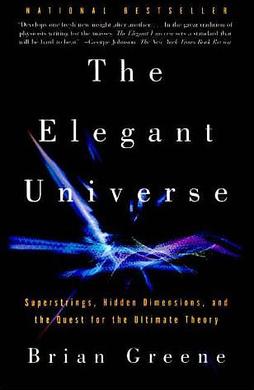
The Elegant Universe: Superstrings, Hidden Dimensions, and the Quest for the Ultimate Theory is a book by Brian Greene published in 1999, which introduces string and superstring theory, and provides a comprehensive though non-technical assessment of the theory and some of its shortcomings. In 2000, it won the Royal Society Prize for Science Books and was a finalist for the Pulitzer Prize for General Non-Fiction. A new edition was released in 2003, with an updated preface.
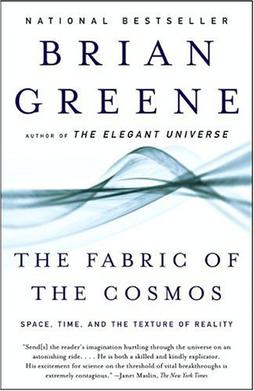
The Fabric of the Cosmos: Space, Time, and the Texture of Reality (2004) is the second book on theoretical physics, cosmology, and string theory written by Brian Greene, professor and co-director of Columbia's Institute for Strings, Cosmology, and Astroparticle Physics (ISCAP).
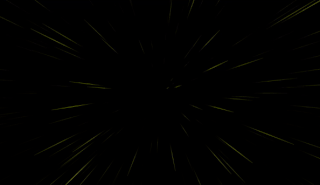
In science fiction, hyperspace is a concept relating to higher dimensions as well as parallel universes and a faster-than-light (FTL) method of interstellar travel. Its use in science fiction originated in the magazine Amazing Stories Quarterly in 1931 and within several decades it became one of the most popular tropes of science fiction, popularized by its use in the works of authors such as Isaac Asimov and E. C. Tubb, and media franchises such as Star Wars.

Jonathan Nolan is a British-American screenwriter, producer, director and author. He is the creator of the CBS science fiction series Person of Interest (2011–2016) and co-creator of the HBO science fiction western series Westworld (2016–2022).
Edward M. Lerner is an American author of science fiction, techno-thrillers, and popular science.

An Einstein–Rosen bridge, or wormhole, is a postulated method, within the general theory of relativity, of moving from one point in space to another without crossing the space between. Wormholes are a popular feature of science fiction as they allow faster-than-light interstellar travel within human timescales.
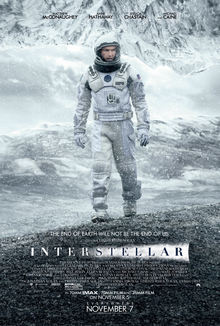
Interstellar is a 2014 epic science fiction film co-written, directed, and produced by Christopher Nolan. It stars Matthew McConaughey, Anne Hathaway, Jessica Chastain, Bill Irwin, Ellen Burstyn, Matt Damon, and Michael Caine. Set in a dystopian future where humanity is struggling to survive, the film follows a group of astronauts who travel through a wormhole near Saturn in search of a new home for mankind.

Mundane science fiction (MSF) is a niche literary movement within science fiction that developed in the early 2000s, with principles codified by the "Mundane Manifesto" in 2004, signed by author Geoff Ryman and "The Clarion West 2004 Class". The movement proposes "mundane science fiction" as its own subgenre of science fiction, typically characterized by its setting on Earth or within the Solar System; a lack of interstellar travel, intergalactic travel or human contact with extraterrestrials; and a believable use of technology and science as it exists at the time the story is written or a plausible extension of existing technology. There is debate over the boundaries of MSF and over which works can be considered canonical. Rudy Rucker has noted MSF's similarities to hard science fiction and Ritch Calvin has pointed out MSF's similarities to cyberpunk. Some commentators have identified science fiction films and television series which embody the MSF ethos of near-future realism.

Parallel Worlds: A Journey Through Creation, Higher Dimensions, and the Future of the Cosmos is a popular science book by Michio Kaku first published in 2004.

The Starmus International Festival is an international gathering focused on celebrating astronomy, space exploration, music, art, and other sciences such as biology and chemistry. It was founded by Garik Israelian, an astronomer at the Institute for Astrophysics in Tenerife, Canary Islands, Spain.
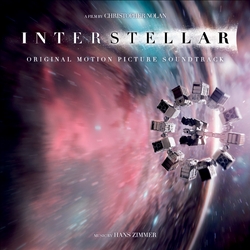
Interstellar: Original Motion Picture Soundtrack is the soundtrack album composed by Hans Zimmer to the 2014 film Interstellar directed by Christopher Nolan. Zimmer had previously scored Nolan's The Dark Knight film trilogy and Inception. The soundtrack garnered critical acclaim. Prior to its digital release, it was nominated for an Academy Award and Original Score at the Hollywood Music in Media Awards. The soundtrack was released on November 17, 2014 via the WaterTower label.

Beyond Star Trek: Physics from Alien Invasions to the End of Time is the fourth non-fiction book by the American theoretical physicist Lawrence M. Krauss. The book was initially published on November 7, 1997 by Basic Books and since then has appeared in five foreign editions. In his previous work, The Physics of Star Trek, Lawrence Krauss explained a number of ideas and concepts featured in the series; they may or may not exist in our universe. In this book, Krauss goes farther to discuss the realities of physics when it is applied to components from other sci-fi story lines.

Christopher Nolan is a British-American film director, producer, and screenwriter. His feature directorial debut was the neo-noir crime thriller Following (1998) which was made on a shoestring budget of $6,000. Two years later, he directed the psychological thriller Memento (2000) which starred Guy Pearce as a man suffering from anterograde amnesia searching for his wife's killers. Similar to his debut feature it had a non-linear narrative structure, and was his breakthrough film. It was acclaimed by critics and was a surprise commercial success. For the film Nolan received his first nomination for the Directors Guild of America Award for Outstanding Directing – Feature Film, and for writing its screenplay he was nominated for the Academy Award for Best Original Screenplay. He next directed the mystery thriller remake Insomnia (2002) which starred Al Pacino, Robin Williams, and Hilary Swank. It was his first film for Warner Bros., and was a critical and commercial success.

Tenet is a 2020 science fiction action thriller film directed and written by Christopher Nolan, who also produced with his wife Emma Thomas. A co-production between the United Kingdom and the United States, it stars John David Washington, Robert Pattinson, Elizabeth Debicki, Dimple Kapadia, Michael Caine, and Kenneth Branagh. The film follows a former CIA agent who learns how to manipulate the flow of time to prevent an attack from the future that threatens to annihilate the present world. Nolan continued his relationship with Warner Bros. and his production company Syncopy for the film's production and distribution.

Christopher Nolan is a British-American filmmaker known for using aesthetics, themes and cinematic techniques that are instantly recognisable in his work. Regarded as an auteur and postmodern filmmaker, Nolan is partial to elliptical editing, documentary-style lighting, hand-held camera work, natural settings, and real filming locations over studio work. Embedded narratives and crosscutting between different time frames is a major component of his work, and his films often feature experimental soundscapes and mathematically inspired images and concepts. Nolan prefers shooting on film to digital video and advocates for the use of higher-quality, larger-format film stock. He also favours practical effects over computer-generated imagery, and is a proponent of theatrical exhibition.

Space travel, or space flight is a classic science-fiction theme that has captivated the public and is almost archetypal for science fiction. Space travel, interplanetary or interstellar, is usually performed in space ships, and spacecraft propulsion in various works ranges from the scientifically plausible to the totally fictitious.

Cinematic scientific visualization (CSV) is the visual presentation of scientific data in a way that is typically associated with non-scientific filmmaking techniques including cinematography, lighting, and composition. Cinematic scientific visualizations are often created for purposes of science communication to the general public, e.g. through museum exhibits and documentary films. CSV is considered a subfield of scientific visualization, although the creation methods and visual outputs differ due to CSV's heavy emphasis on aesthetics and design.



















